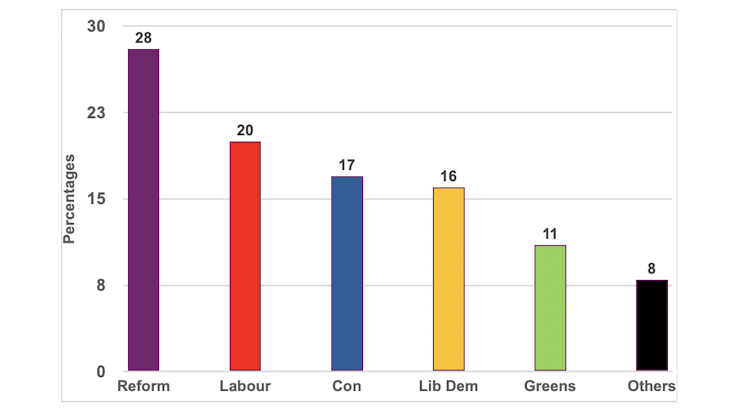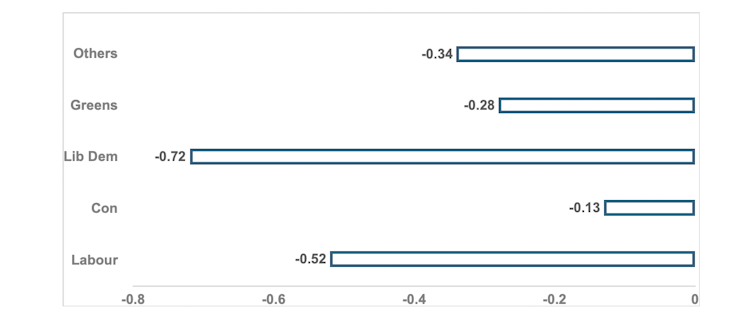Source: The Conversation – UK – By Heba Ghazal, Senior Lecturer, Pharmacy, Kingston University

A dangerous new drug adulterant is spreading through America’s illicit opioid supply, and it’s making overdoses significantly harder to reverse. Medetomidine, a veterinary sedative normally used to sedate pets, is increasingly being mixed with heroin and fentanyl, creating a cocktail that experts warn could be far deadlier than previous street drug combinations.
Known as “flysky” on the streets, this animal tranquilliser has already been linked to at least two overdose deaths in Pennsylvania and represents a troubling evolution in the continuing opioid crisis. Unlike traditional opioid overdoses, those involving medetomidine can’t be effectively treated with naloxone, the medication paramedics use to reverse overdoses.
The emergence of medetomidine mirrors the earlier spread of xylazine, another veterinary sedative that earned the nickname “zombie drug” for its ability to cause severe, treatment-resistant skin wounds. The earliest confirmed detection of medetomidine as a street drug adulterant occurred in Maryland, where it was found in a synthetic opioid mixture probably containing fentanyl.
From there, the drug spread rapidly. Traces appeared across multiple US states and into Canada, and by early 2024, medetomidine was linked to overdose clusters in Philadelphia and other locations, following the same geographical pattern that xylazine had taken years earlier.

rblfmr/Shutterstock.com
What makes medetomidine particularly concerning is its extraordinary potency. Medetomidine is an alpha-2 adrenergic receptor agonist – a type of drug that affects the nervous system. While approved only for veterinary use in the UK to sedate animals and provide pain relief for pets, experts estimate it may be 200 to 300 times more potent than xylazine when used as a drug adulterant.
This extreme potency means that even tiny amounts can have devastating effects. Users experiencing medetomidine-laced drug overdoses typically display extreme drowsiness, muscle twitching, dangerously low heart rate and blood pressure, and laboured breathing.
Chicago cases from 2024 revealed additional concerning symptoms: extremely high blood pressure, severe confusion and critically low blood oxygen levels – often dropping below 90%, a threshold that can cause organ damage.
Perhaps most alarming is medetomidine’s resistance to naloxone, the opioid overdose-reversal drug that has saved countless lives. While naloxone can counteract heroin and fentanyl by blocking opioid receptors in the brain, medetomidine affects the body through entirely different pathways. This means there is no approved antidote for medetomidine poisoning, leaving healthcare professionals with limited options when treating overdoses involving this adulterant.
The withdrawal process is equally tricky. Philadelphia health officials report that people withdrawing from medetomidine-laced drugs experience dangerous spikes in blood pressure and heart rate – symptoms severe enough to trigger a heart attack in some cases. Users also endure uncontrollable nausea and vomiting, intense anxiety, restlessness and violent shaking.
Understanding why dealers add these veterinary drugs to street opioids requires examining the economics of the illicit drug trade. According to a 2022 DEA report, a kilogram of xylazine powder can be bought from Chinese suppliers for as little as U$6.00 (£4.44). This rock-bottom pricing allows drug traffickers to increase their profit margins significantly while making weak or diluted opioid batches feel more potent to users.
These sedatives also serve as effective cutting agents (substances used to add bulk and weight to drugs without requiring expensive active ingredients). For dealers, it’s a win-win. They can stretch their supply while creating a product that feels stronger and lasts longer than pure opioids alone.
Managing new drug adulterants like medetomidine presents unique difficulties for both medical professionals and law enforcement. The drugs make intoxication and withdrawal symptoms more severe and complicated, while also making it harder to identify which specific substance is causing particular symptoms in a patient.
Medetomidine compounds these problems because it’s rapidly metabolised by the body, making it difficult to track the timing and duration of its effects. Additionally, these veterinary sedatives are not included in routine drug screenings or toxicology tests, meaning their presence often goes undetected by medical professionals and law enforcement, despite their potentially lethal effects.
UK response
While no cases of acute medetomidine toxicity have been published in the UK, the country has already experienced problems with xylazine, a similar veterinary sedative.
British health authorities have detected xylazine in 35 cases through toxicology tests and drug seizures. Of 16 people found to have xylazine in their systems, 11 cases proved fatal – deaths that occurred primarily during May 2022 and August 2023.
In response to the growing threat, the government has taken decisive action. Over 20 dangerous substances have been banned as part of efforts to combat synthetic drugs and improve public safety.
Xylazine is now controlled as a class C substance, carrying penalties of up to two years in prison for possession and up to 14 years for production and supply.
The government is also working to better equip police, healthcare workers and Border Force agents to tackle this evolving threat through improved training and detection capabilities.
The case of medetomidine highlights a disturbing reality about modern drug policy: the illicit drug supply continues to change in unpredictable and dangerous ways. Neither medetomidine nor xylazine was developed for human consumption, and there are no human studies examining their drug interactions, lethal doses or safe reversal protocols.
As these veterinary sedatives become more common in street drugs, the challenge for healthcare professionals continues to grow. Traditional overdose response protocols, built around reversing opioid effects with naloxone, become inadequate when faced with multi-drug combinations that affect the body through completely different mechanisms.
For users, families and communities already devastated by the opioid crisis, the emergence of medetomidine represents yet another layer of risk in an already dangerous landscape.
As the drug supply becomes increasingly unpredictable, the need for comprehensive approaches to drug policy – encompassing everything from harm reduction to treatment access to law enforcement – becomes ever more urgent.
![]()
Heba Ghazal does not work for, consult, own shares in or receive funding from any company or organisation that would benefit from this article, and has disclosed no relevant affiliations beyond their academic appointment.
– ref. An animal sedative keeps turning up in opioid deaths – what you need to know about medetomidine – https://theconversation.com/an-animal-sedative-keeps-turning-up-in-opioid-deaths-what-you-need-to-know-about-medetomidine-264080









